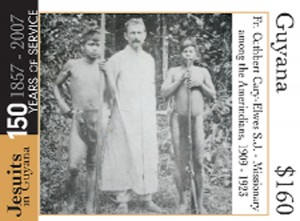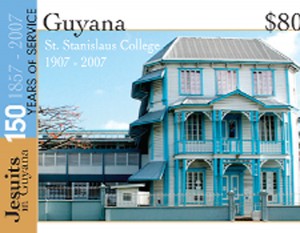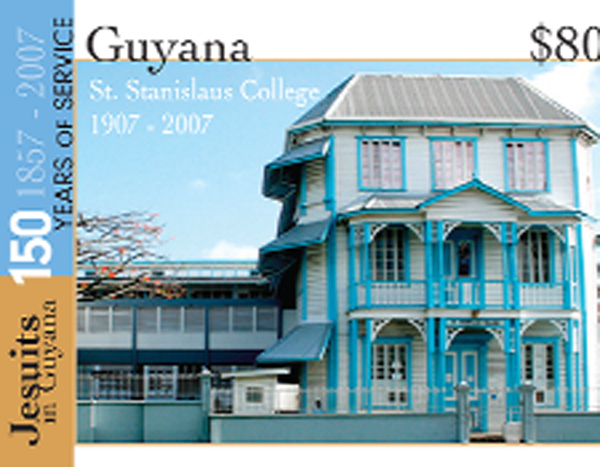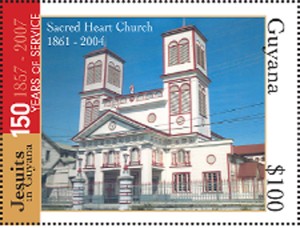Fr Cuthbert Cary-Elwes SJ, Missionary among the Amerindians 1909-1923
On Monday, August 25, four stamps were issued by the Guyana Post Office Training Centre on Carmichael Street. One of them was a commemorative stamp for Sir James Douglas, a Guyanese born of a Scottish father and a Free Coloured woman, who became the first Governor of British Colombia in Canada. The three others which can be seen here relate to the Roman Catholic community in Guyana, and information on each stamp has been provided by Fr Malcom Rodrigues, SJ.

Today, almost a hundred years on, the Jesuits continue to serve the Amerindians of the interior with bases at St Ignatius, Aishalton and Kurukubaru. There are many parish Amerindian lay ministers today who work with the Jesuits in the interior.
In 1860, Bishop Etheridge saw the need for another church in Georgetown , this time to cater to the spiritual needs of the Portuguese population. Thus on April 14, 1860 a site was bought for BG$1,870, and a contract for the building was negotiated at the cost of BG$12,000. At Christmas 1861, the Church of the Sacred Heart was opened by Fr Schembri for midnight mass and was solemnly blessed by the Bishop on June 22, 1862. It was to serve the Catholic population of Georgetown for well over a hundred years, until the fatal fire of Christmas morning in 2004, which totally destroyed the church and the two schools attached to it. Bishop Francis has decided to rebuild the church but the cost would be much more than the original cost for the beautiful building seen in the photograph on page 15A.

The Jesuits, noted worldwide for their work in education, began a school for boys in Georgetown, which was referred to as the Catholic Grammar School.
This changed sites around town, even moving to the Sacred Heart presbytery in Main Street, but finally in 1907 a property was acquired at the eastern end of the present site of the college, and this was converted into the college and the rest of the ground into a playing field.
It was then on October 22 in 1907, that the title of the school was officially changed to Saint Stanislaus College, with the statue of Saint Stanislaus today in its niche on the second floor of the main entrance to the school. Times have changed, and today Saint Stanislaus College houses close to 500 students, roughly half of them girls and half boys.






